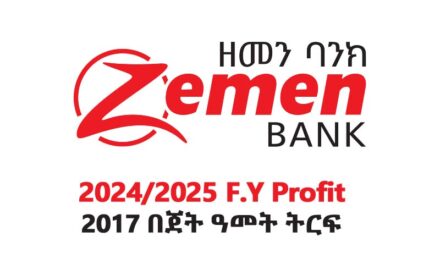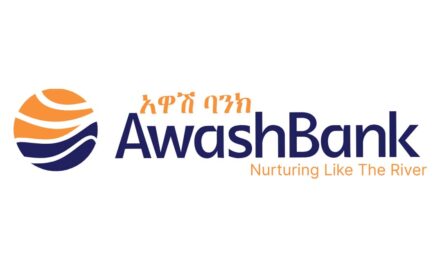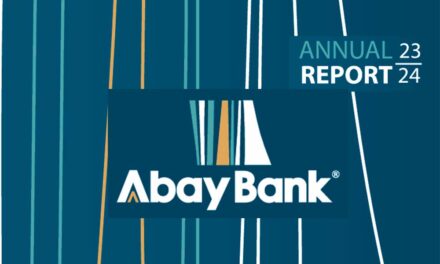Enat Bank has shown a 50 pc surge in profit, although the huge increase in profit after tax has been consumed by expansion in paid up capital by 47pc
A 50pc increase in net profits to 78.9 million Br, has slightly helped Enat to boost its earnings per share (EPS) which are currently at the 167.6 Br mark from 164.3 Br last year.
Established in 2013 with 11 Board members, six of whom are high profile women, the bank, has, as of this year, managed to expand its paid-up capital by 47pc to 565.1 million Br.
This enabled the bank to surpass the minimum paid up capital set by the National Bank of Ethiopia (NBE), two years before the stipulated deadline. Unlike other banks, Enat was obliged to reach half billion paid up capital in 2018, because of its date of establishment. A 2011 NBE directive obliged all banks to reach a paid up capital of half a billion Br by 2015/16. However, because Enat Bank was established in 2013, it was given a grace period of five years in which to reach the required capital.
The latest reports show that the bank is two years ahead of the schedule.
However, a year ago, as the part of the Second Growth and Transformation Plan, the National Bank of Ethiopia (NBE) urged all private banks to attain two billion birr in paid up capital in 2020.
In this respect, Enat is short of 1.4 billion Br to attain the required threshold by the deadline in about three years.
The rationale for investing heavily in capitalization was justified by the Bank being for the expansion of their branch networks, loan disbursement and ultimately meeting the demand for credit of a growing economy.
Enat was primarily established to provide financial security and opportunities for women, with a paid up capital of 262 million Br. The Bank’s female ownership is at 61pc.
With the exception of gains from foreign exchange, Enat reported a positive growth in its major operational incomes.
It earned over 183.28 million Br from interest on loans, investments in NBE bonds and time deposits, which is 46pc higher than 2015.
Enat, however, had a worse year in making money from foreign exchange dealings. Its earnings from foreign exchange plummeted by almost half to 7.8 million Br. The figure represents below one percent of the industry’s aggregate. Gains in for-ex still represent 3.6pc of the total income. Last year, its share of the Bank’s total income was 11.2pc.
During its first year operations, the Bank managed to earn the same amount from for-ex, then a year later, doubled its earning to over 15.1 million Br.
“While many of the banks reported healthy growth in foreign exchange dealings, the huge reduction at Enat is a very disappointing performance,” said Abdulmenan Mohammed Hamza, an analyst at London Portobello Ltd.
“Our bank had to endure a lot of adversities to deal with the intricacies surrounding for-ex acquisition,” said Wondwosen Teshome, president of Enat. “Despite this, we have never downplayed our responsibility to comply with NBE’s requirement in rationally allocating the scant foreign currency at our disposal.”
Since February, 2016, the central bank has urged all banks to allocate foreign currency on first come first served basis, to their customers, while the NBE revised the above priority list as required.
In 2015, the private banking industry amassed 1.6 billion Br from forex dealings.
Three weeks ago, Enat’s peer, Lion International Bank reported a gain of over 110 million Br from foreign exchange dealings, which is 47pc higher than the preceding fiscal year.
A look at Enat’s expense account reveals further expansion is planned.
Overall, the growth in income at Enat has been accompanied by expansion in expenses.
The Bank’s operational performance indicates the expense growth outpaced the growth in income. The latter grew by 59pc, which is 16 percentage points lower than the former. Overall, Enat spent 68 cents to generate one birr of income. Last year, all the banks spent 64 cents to earn one birr. That figure was below 50 cents five years ago.
Enat has spent 57 million as an administrative cost, which is almost equal to 72pc of the bank’s profit after tax.
To further boost service access to its customers, it increased its branches to 21, six of which are in outlying regional states, towns and the rest in metropolitan areas.
However, some shareholders were dissatisfied with the branch network of the bank. They believe the bank should extensively expand its branches throughout the country.
The management of the bank on the other hand, argues that strategic direction should focus on quality than quantity.
Nationwide, the total number of commercial bank branches reached 3187, as of June 2016. Of these, 66pc are located in regional states and towns. One branch is estimated to serve an average of 28,932 people.
Enat’s total assets increased by 47pc to 3.2 billion Br.
Total outstanding loans and advances reached 1.6 billion Br, showing a growth of nearly half a billion. Of these, construction and import loans represent almost half of the amount.
Deposits leaped by 51pc to 2.4 billion Br, lifting the Bank’s market share to 1.6pc from 1.3pc in 2014/15.
As a result, the loan to deposit ratio of Enat decreased to 68pc from 72pc, meaning the Bank is not lending much to customers for every one birr of deposits. It could also indicate the Bank is not earning as much it can on its deposits
In contrast, Abdulmenan argues differently.
“Even though the current year’s loan to deposits ratio is lower than last year’s, it is still positive,” he commented.
In October, 2016, Enat signed a new portfolio Risk Sharing Loan agreement with The United States Agency for International Development (USAID) and the Swedish International Development Cooperation Agency (SIDA).
The agreement provides 10 million dollars of collateral to enable Enat to cover losses on loans to women entrepreneurs, with a rationale of providing more loans to women-owned businesses and increasing its capacity to lend to small and medium-sized enterprises (SMEs).
A look at its liquidity, Enat’s cash and bank balances increased by 25pc to 667.44 million Br. The proportion of cash and balances to total assets have decreased to 21pc from 28pc.
“Despite such reductions, the liquidity level of Enat is still healthy,” Abdulmenan commented.
Source : AddisFortune





